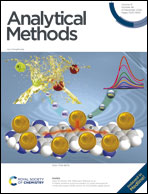Förster resonance energy transfer (FRET) and applications thereof
Abstract
FRET is a nonradiative process of energy transfer that is based on the dipole–dipole interactions between molecules that are fluorescent. Transfer of energy takes place rapidly from a donor molecule to an acceptor molecule in juxtaposition such as 0 to 10 nm without photonic radiation. FRET has occupied a center stage in biotechnology and biological studies. It is used to gain information on conformation changes in single molecules. The pharmaceutical industry has also developed large fluorescence detection systems with very small sample sizes, at the level of single molecules, using fluorescence correlation spectroscopy.

- This article is part of the themed collection: Recent Review Articles


 Please wait while we load your content...
Please wait while we load your content...